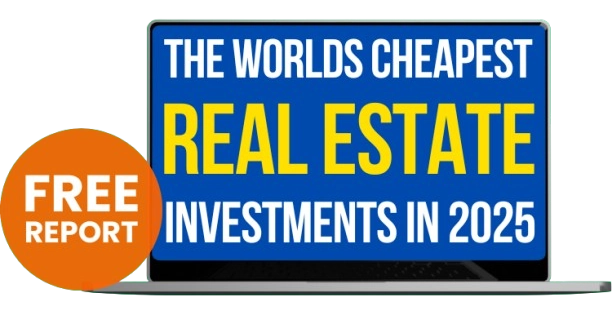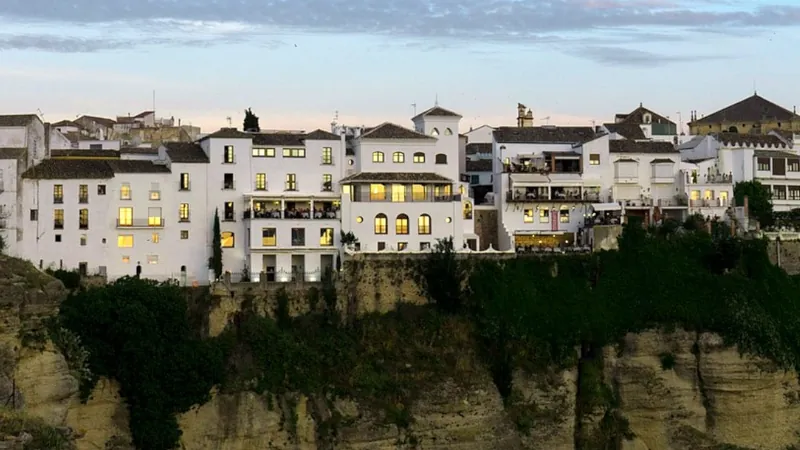Why You Should Want A European Passport
A life where you can live, work, and explore across 27 European countries without the need for a single visa...
Top Destinations:
Whether you’re looking for fun and sun, a peaceful retirement, or the chance to earn some extra income, you’ve got a real world of opportunity open to you… In short, we’ve done our best to narrow down your best options, but only you can decide the right country for you.
Best For:
How Much Will It Cost You To Live Overseas?
The only honest answer is, we have no idea. And neither does anyone else. The only one who can answer that question is you. Here’s the most important thing to understand about budgeting your new life overseas…
Follow Us:
Upcoming Events
Live and Invest In Spain Conference
Offshore Wealth Summit
Greece Workshop
VALENCIA, SPAIN
Sep. 17-19, 2025
PANAMA CITY, PANAMA
Oct. 15-17, 2025
VIRTUAL
Nov. 13, 2025
Contact Our Events Team
Reach us with your questions by email at: events@liveandinvestoverseas.com
Unlock The World
Overseas Havens Reports
Conference Kits
Lahardan Books
Our Customer Service team is here to assist with any questions or concerns CustomerService@LiveandInvestOverseas.com
Top Destinations:
Whether you’re looking for fun and sun, a peaceful retirement, or the chance to earn some extra income, you’ve got a real world of opportunity open to you… In short, we’ve done our best to narrow down your best options, but only you can decide the right country for you.
Best For:
How Much Will It Cost You To Live Overseas?
The only honest answer is, we have no idea. And neither does anyone else. The only one who can answer that question is you. Here’s the most important thing to understand about budgeting your new life overseas…
Follow Us:
Upcoming Events
Live and Invest In Spain Conference
Offshore Wealth Summit
Greece Workshop
VALENCIA, SPAIN
Sep. 17-19, 2025
PANAMA CITY, PANAMA
Oct. 15-17, 2025
VIRTUAL
Nov. 13, 2025
Contact Our Events Team
Reach us with your questions by email at: events@liveandinvestoverseas.com
Unlock The World
Overseas Havens Reports
Conference Kits
Lahardan Books
Our Customer Service team is here to assist with any questions or concerns CustomerService@LiveandInvestOverseas.com

We Value Your Privacy! We will not share your email address with anyone else, period.
Home » Best Countries To Live, Invest, And Retire Overseas » Europe » Spain : Everything You Need To Know In 2025 » Real Estate In Spain : Everything You Need To Know In 2025
Spain is one of Europe’s most attractive real estate markets for foreign buyers. The country offers excellent value, a straightforward buying process, and a wide range of options to suit every lifestyle and budget.

Spain has no restriction on foreigners owning property. Plus, this country has long been one of the world’s most sought-after property destinations thanks to its great weather, relatively low cost of living, and friendly atmosphere.
The country was hit particularly hard by the last recession and after a deep, dark downturn that kicked off in 2008, the market is finally bouncing back… and savvy property buyers have been watching closely for signs of a turnaround.
For instance, Spain has six times more coastline than Portugal. This makes it a more competitive market… with many more options for the property buyer.

Reviewed By Lief Simon
Lief Simon is the managing editor of Global Property Advisor, Simon Letter, and Offshore Living Letter. He has purchased more than 45 properties, investing in 23 different countries around the world.
Start Your New Overseas Life Today
A world full of fun, adventure, and profit awaits! Sign up for our free daily e-letter, Overseas Opportunity Letter, and we’ll send you a FREE report on the 10 Best Places To Retire In Style Overseas Today 2025
We Value Your Privacy! We will not share your email address with anyone else, period.
It’s increasingly difficult to find anything affordable in the Algarve within steps of the sand. But in Spain, you can still find attractive coastal property for less than US$200,000.
Property markets in the Costa del Sol are hot. And a recent spike in foreigner buyers has led to a severe lack of inventory in this market.
And, Spain’s pariah status is gone and the country is awash with real estate bargains.
Now the official data on property sales show that the recovery is in progress… and buyers and investors are making their moves.
Unlike resort destinations like the Balearics (and other coastal and island locations), Spain’s big cities have diverse economies that are not reliant only on tourism.
Barcelona is a dream location, not just for the 1.6 million locals but clearly for the tourists and business visitors who flock there by the millions each year (over eight million in 2013). This is a strong short-term rental market and a great opportunity for buy-to-let investment.
Property in Madrid can appeal to tourists, expats, and locals, and this helps buttress investors in a market, which at this early stage still carries an element of risk.
However, in Madrid foreign buyers make up a far smaller proportion of the market. Real estate here is dependent on Spain’s locals. Meanig a full recovery and return to growth will come to Madrid more slowly than to the tourism hotspots, like Barcelona.
But when that growth does come, it will be less vulnerable to the ebb and flow of interest from fickle international buyers.
But, if you’re more interested in the resort towns, the Balearics are where to look. Majorca is the grand dame of the Balearics.
Despite being a hotspot for tourism for so many years, when you know where to look, you’ll find that the 1,405-square-mile island has managed to cling to much of its charm.
The island gets an impressive 8 million visitors a year, mostly during high season. While this renders some beaches extremely busy, it brings some key advantages. For one, the island’s infrastructure is superb.
The road network is excellent and the airport is large and extremely well connected, especially for an island of this size.
And while prices are inevitably pushed upwards by the number of visitors, they drop down to the range paid by Spaniards elsewhere in the country when you move towards the center of the island.

Reviewed By Lief Simon
Lief Simon is the managing editor of Global Property Advisor, Simon Letter, and Offshore Living Letter. He has purchased more than 45 properties, investing in 23 different countries around the world.
Start Your New Overseas Life Today
A world full of fun, adventure, and profit awaits! Sign up for our free daily e-letter, Overseas Opportunity Letter, and we’ll send you a FREE report on the 10 Best Places To Retire In Style Overseas Today 2025
We Value Your Privacy! We will not share your email address with anyone else, period.
The Spanish coasts are one of the most popular destinations to buy property in Spain. Most importantly, Spain is a safe country and it encourages foreign
investment in property through its golden visa program.
Yes, Spain has no restrictions on foreign nationals purchasing property. Both residents and non-residents can freely buy residential, commercial, or land properties .
Buyers should anticipate additional costs amounting to approximately 10–15% of the property’s purchase price. These include:
Transfer Tax (ITP): 6–10% for resale properties.
VAT (IVA): 10% for new properties.
Notary and Land Registry Fees: Approximately 1–2%.
Legal Fees: Vary depending on the complexity of the transaction .
Yes, many Spanish banks offer mortgages to non-residents. Typically, banks finance up to 60–70% of the property’s value for non-residents. Interest rates and terms may vary, so it’s advisable to consult with multiple banks or financial advisors.
Property owners in Spain are subject to:
Property Tax (IBI): An annual tax ranging from 0.4% to 1.1% of the property’s cadastral value.
Non-Resident Income Tax: If the property is rented out, non-residents pay a flat rate of 24% on rental income.
Imputed Income Tax: Even if the property isn’t rented, non-residents may be taxed on a deemed rental income, typically 1–2% of the property’s cadastral value .
A life where you can live, work, and explore across 27 European countries without the need for a single visa...
This year we once again crowned Valencia the #1 Best Place To Retire In The World in our Overseas Retirement...
Sunny days, stunning beaches, happy people... A low cost of living, tons of cheap property, and tasty food...Healthy living, safe...
Considering a move to Spain? Here’s my list of things you need to know before taking the plunge… 1.Spain Offers...


We Value Your Privacy! We will not share your email address with anyone else, period.
As seen in

© 2008 – Live and Invest Overseas™ – All Rights Reserved.
Top Countries
Budgets
Affordable
Resources
Real Estate
Overseas Property Alert
How To Become Independently Wealthy And Fund The Lifestyle Of Your Dreams
Buying Real Estate For Cashflow
Discover tips and strategies used by global property investing veterans
Explore Our Latest Posts
Learn how to invest and purchase property abroad…
Conferences
Live and Invest In Spain Conference
Offshore Wealth Summit
GREECE WORKSHOP
Contact Our Events Team:
Toll-Free U.S. and Canada:
1 (888) 627 8834
From Outside North America:
1 (443) 599 1221
Working Hours
Monday – Friday 08:00 am – 17:00 pm EST.
Reach us with your questions by email at: events@liveandinvestoverseas.com
Store
Overseas Havens Reports
Conference Kits
Lahardan Books
Services
Free Report
THE 10 BEST PLACES TO RETIRE IN 2025

Sign up to receive the FREE daily e-letter, Overseas Opportunity Letter and we’ll immediately email you our editors’ latest research report…
We Value Your Privacy! We will not share your email address with anyone else, period.
Follow Us:
© 2008 - Live and Invest Overseas - All Rights Reserved.
RETIRE OVERSEAS AND LIVE LIKE ROYALTY
Sign up for FREE and learn how to live the good life on a modest budget, find bargain property, and more. Plus, check out our free report on the 10 BEST PLACES TO RETIRE.
We Value Your Privacy! We will not share your email address with anyone else, period.
RETIRE OVERSEAS AND LIVE LIKE ROYALTY
Sign up for FREE to learn how. Plus, check out our FREE report on THE 10 BEST PLACES TO RETIRE